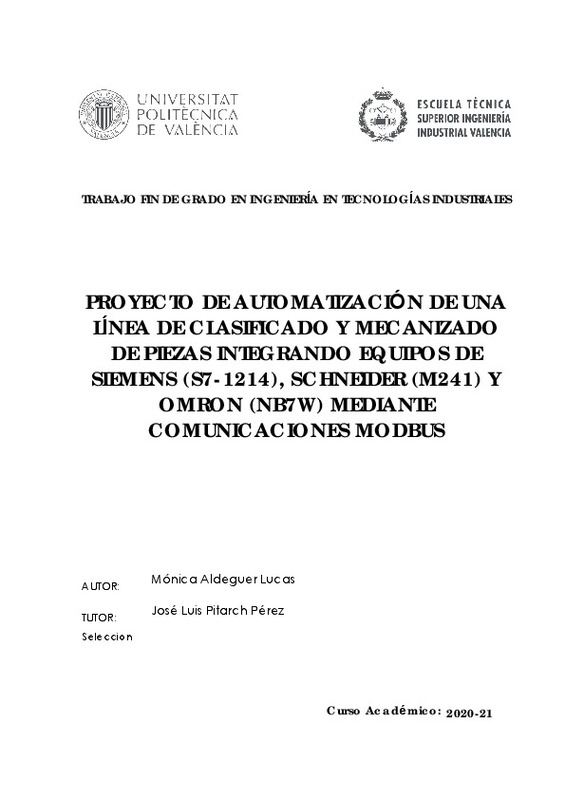JavaScript is disabled for your browser. Some features of this site may not work without it.
Buscar en RiuNet
Listar
Mi cuenta
Estadísticas
Ayuda RiuNet
Admin. UPV
Proyecto de automatización de una línea de clasificado y mecanizado de piezas integrando equipos de Siemens (S7-1214C), Schneider (M241) y Omron (NB7W) mediante comunicaciones Modbus
Mostrar el registro completo del ítem
Aldeguer Lucas, M. (2021). Proyecto de automatización de una línea de clasificado y mecanizado de piezas integrando equipos de Siemens (S7-1214C), Schneider (M241) y Omron (NB7W) mediante comunicaciones Modbus. Universitat Politècnica de València. http://hdl.handle.net/10251/172419
Por favor, use este identificador para citar o enlazar este ítem: http://hdl.handle.net/10251/172419
Ficheros en el ítem
Metadatos del ítem
| Título: | Proyecto de automatización de una línea de clasificado y mecanizado de piezas integrando equipos de Siemens (S7-1214C), Schneider (M241) y Omron (NB7W) mediante comunicaciones Modbus | |||
| Autor: | Aldeguer Lucas, Mónica | |||
| Director(es): | ||||
| Entidad UPV: |
|
|||
| Fecha acto/lectura: |
|
|||
| Resumen: |
[ES] En el presente proyecto se ha automatizado un proceso de carácter industrial compuesto por tres subprocesos, que en su conjunto permiten: la clasificación de piezas por distinción de color, la manipulación y el ...[+]
[EN] In the present project, an industrial process consisting of three sub-processes has been automated, which together allow: sorting by colour distinction, handling and machining of pieces. To emulate the described ...[+]
|
|||
| Palabras clave: |
|
|||
| Derechos de uso: | Reserva de todos los derechos | |||
| Editorial: |
|
|||
| Titulación: |
|
|||
| Tipo: |
|
recommendations
Este ítem aparece en la(s) siguiente(s) colección(ones)
-
ETSII - Trabajos académicos [10404]
Escuela Técnica Superior de Ingenieros Industriales







